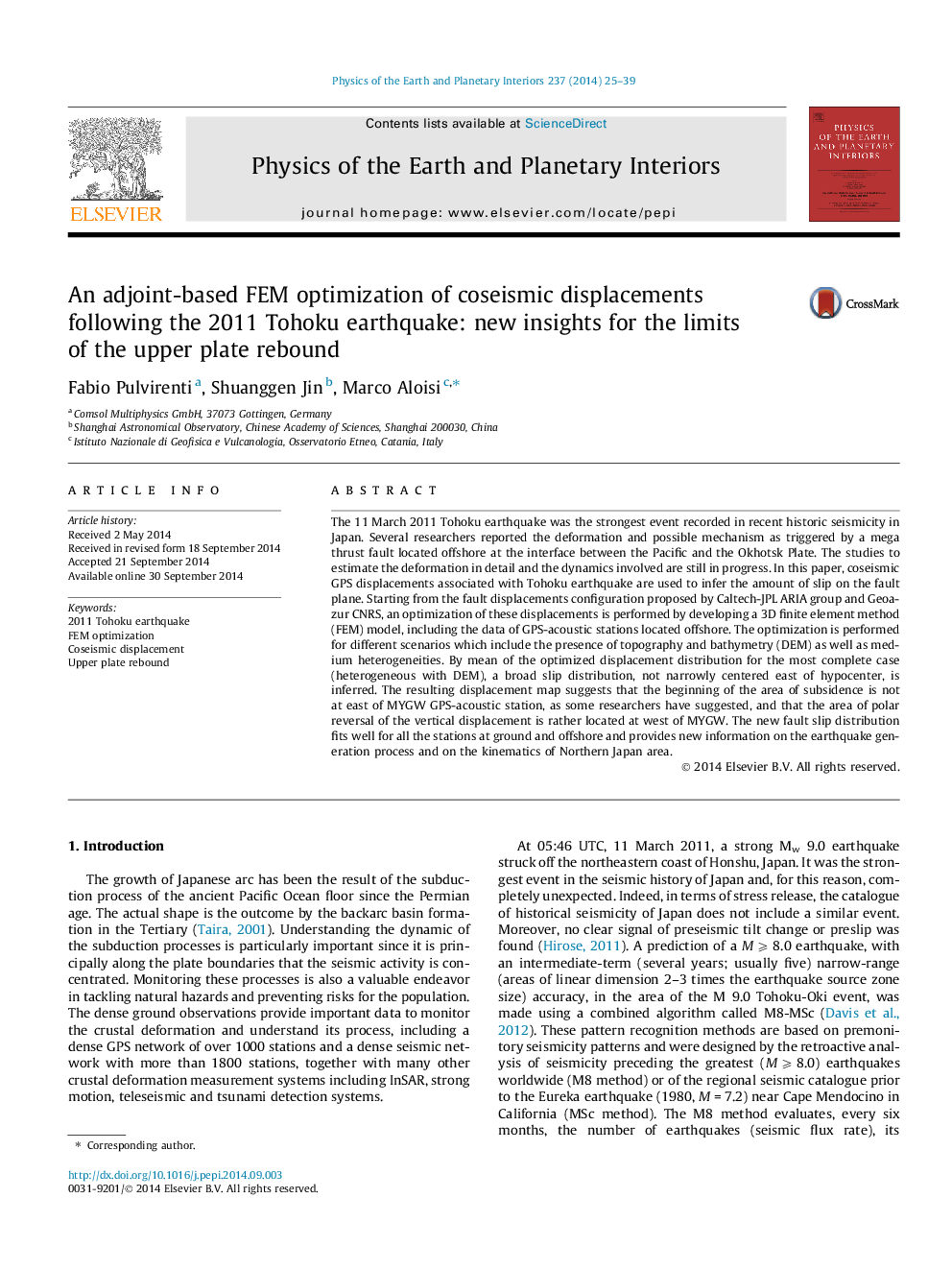| کد مقاله | کد نشریه | سال انتشار | مقاله انگلیسی | نسخه تمام متن |
|---|---|---|---|---|
| 4741518 | 1641504 | 2014 | 15 صفحه PDF | دانلود رایگان |

• A combined FEM optimization of GPS and GPS/acoustic data improves the quality of the slip distribution at the fault plane.
• The fault slip distribution explains the recorded dataset without claiming for zones with inelastic properties.
• The boundary position of the polar reversal of the vertical displacements expected from the upper plate rebound is redefined.
• The eastern boundary of the Amurian Plate in Sea of Japan area is traced.
The 11 March 2011 Tohoku earthquake was the strongest event recorded in recent historic seismicity in Japan. Several researchers reported the deformation and possible mechanism as triggered by a mega thrust fault located offshore at the interface between the Pacific and the Okhotsk Plate. The studies to estimate the deformation in detail and the dynamics involved are still in progress. In this paper, coseismic GPS displacements associated with Tohoku earthquake are used to infer the amount of slip on the fault plane. Starting from the fault displacements configuration proposed by Caltech-JPL ARIA group and Geoazur CNRS, an optimization of these displacements is performed by developing a 3D finite element method (FEM) model, including the data of GPS-acoustic stations located offshore. The optimization is performed for different scenarios which include the presence of topography and bathymetry (DEM) as well as medium heterogeneities. By mean of the optimized displacement distribution for the most complete case (heterogeneous with DEM), a broad slip distribution, not narrowly centered east of hypocenter, is inferred. The resulting displacement map suggests that the beginning of the area of subsidence is not at east of MYGW GPS-acoustic station, as some researchers have suggested, and that the area of polar reversal of the vertical displacement is rather located at west of MYGW. The new fault slip distribution fits well for all the stations at ground and offshore and provides new information on the earthquake generation process and on the kinematics of Northern Japan area.
Figure optionsDownload as PowerPoint slide
Journal: Physics of the Earth and Planetary Interiors - Volume 237, December 2014, Pages 25–39